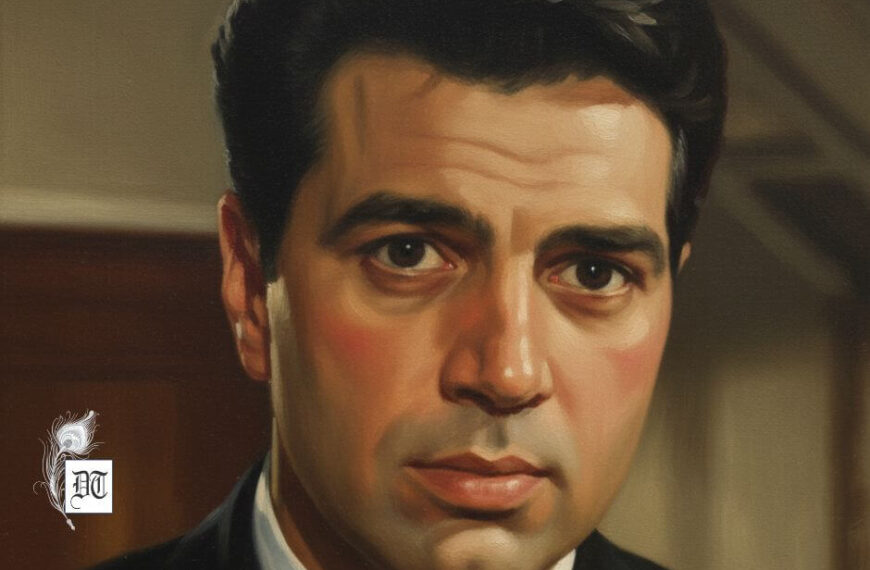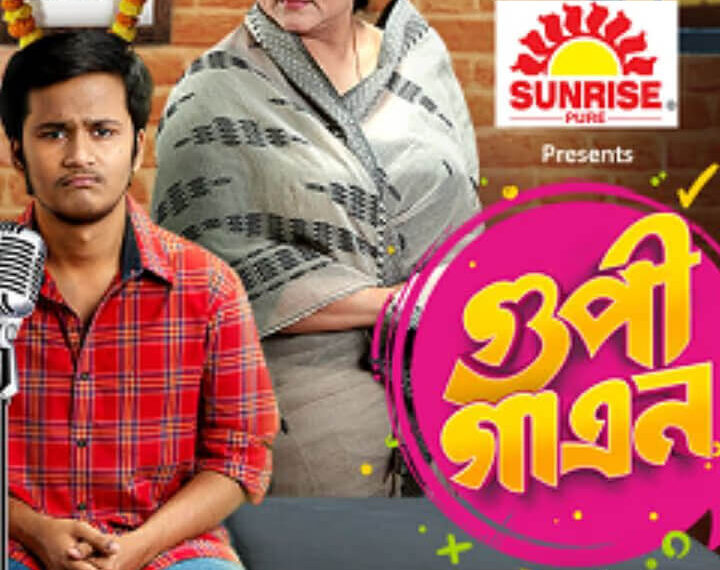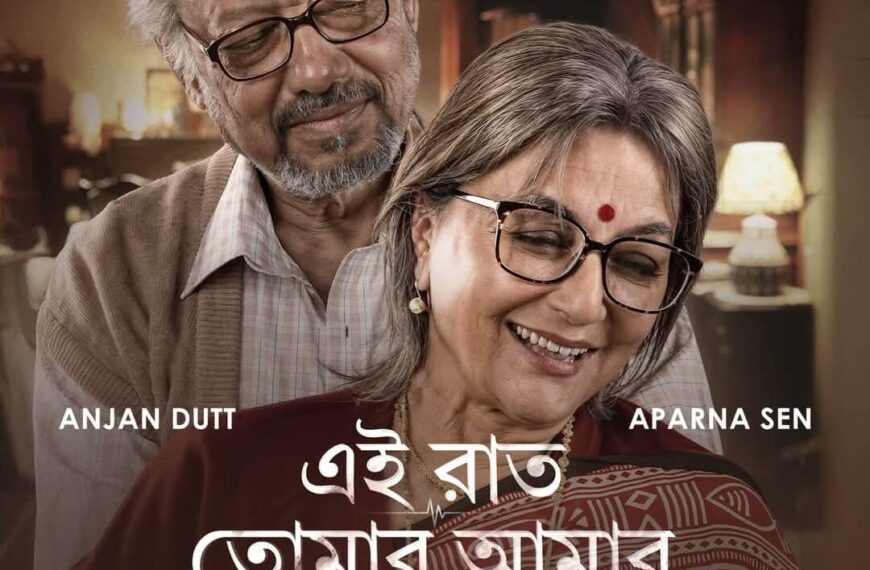Three great film personalities celebrate their birthdays this week. While Guru Dutt was a brilliant filmmaker, his personal life was a mess – possibly the tragic heroes he portrayed on the silver screen. His mysterious death due to an overdose of sleeping pills and alcohol, snatched a gifted filmmaker. Sanjeev Kumar shares his birthday with Guru Dutt. Known for his versatility, he died young, a terribly lonely person, loveless and forlorn. July 12 is the birthday of another great filmmaker, Bimal Roy. His early life was full of hardships, when he with his widowed mother and siblings were tricked by his estate manager from zamandari. Smriti, in her weekly column, pays tribute to these three Great Masters. We, at Different Truths, wish them immortality that they rightfully earned.
Guru Dutt: A Brilliant Filmmaker with a Tragic Personal Life
He was born as Vasanth Kumar Shivashankar Padukone on 9th July 1925, in Mysore. His father was a headmaster and mother a homemaker, who was also a part time writer. A childhood accident made his parents change his name to Guru Dutt, which was considered to be more auspicious and indeed it brought fame and success to its bearer.
Though born in Mysore, he spent his early childhood in Bhowanipore, when his parents relocated from Karwar. His stay at Bhowanipore made him fluent in Bengali. Guru Dutt did not have a happy childhood, the relationship between his parents was strained, and he even had to face hostile behaviour from his maternal relatives. However, he had his early education in Calcutta and joined the Uday Shankar India Culture Center, where the dance maestro Uday Shankar taught him the basics of performing arts.
 Dutt started his career in films by joining Prabhat Studios, Pune, as a choreographer in 1944. Here a long lasting, close friendship between Dev Anand, Rehman and Dutt was born. In 1947, Dutt moved to Mumbai, and worked with leading directors of the time but got his big break when Dev Anand asked him to direct a film for his newly formed production house, Navketan Films.
Dutt started his career in films by joining Prabhat Studios, Pune, as a choreographer in 1944. Here a long lasting, close friendship between Dev Anand, Rehman and Dutt was born. In 1947, Dutt moved to Mumbai, and worked with leading directors of the time but got his big break when Dev Anand asked him to direct a film for his newly formed production house, Navketan Films.
Dutt’s directorial debut was Baazi starring Dev Anand. It was a crime thriller, used close up shots and songs to further the story’s narrative and was a huge commercial success. During the making of Baazi, Dutt met Geeta Roy, a playback singer, and they married on 26th May 1953. Baazi was followed by Jaal and Baaz, the latter also was his debut as an actor. Both the films were a moderate success and were followed by Aar Paar, C.I.D, both crime thrillers and major box office hits. C.I.D also introduced Waheeda Rehman to Bollywood, who played an important role in Dutt’s personal life too. His alleged relationship with Waheeda bought a rift in his marriage with Geeta and they separated.
Despite having a troubled personal life, Dutt was a genius in his professional life. He gifted Bollywood with movies such as Pyasa and Kagaj Ke Phool. In fact, Kagaj Ke Phool, a love story set against the background of the film industry and considered to be semi-autobiographical, was a disaster. The audience could not relate to the story and sadness attached to it, and so devastated was Dutt by this failure that he decided never to direct again. Ironically the movie is considered to be a cult today and in later years was critically acclaimed for its cinematography.
Though he had given up direction, he continued acting under different directors in his production house, and gave brilliant performances in Chaudhvin Ka Chand, Saheb Bibi Aur Ghulam, to name a few. Both the movies were major hits and it was even rumoured that Guru Dutt ghost directed Sahib Bibi Aur Ghulam. His last movie was Hrishikesh Mukherjee’s Saanjh Aur Savera opposite Meena Kumari.
Dutt was a fine director, intense and versatile actor, his films are known for their melodious songs, intricate close-up shots and brilliant camera work. He created magic through his use of light and camera. His intense gaze haunted the audience long after the movie was over. This immensely popular star was unfortunately in a mess in his personal life. His wife drifted away because of Waheeda, who also distanced herself from Dutt. An ambitious man, Dutt, unfortunately, had a misconception that he has achieved too much too soon professionally and there was nothing more left to achieve. This, with the lady love of his life moving away from him, created a void in his life, and unable to cope with it, he started drinking heavily. On October 10th 1964, he was found dead on his bed. The cause of death was stated as over dose of alcohol and sleeping pills, but it is still debated whether it was a well-planned suicide or an accident. Dutt’s son, Arun Dutt, considered the death to be an accident. According to him, “My father had sleeping disorders and popped sleeping pills like any other person. That day he was drunk and had taken an overdose of pills, which culminated in his death. It was a lethal combination of excessive liquor and sleeping pills.”
Whatever may be the reality, but the end of Dutt was an irreplaceable loss to Hindi film industry. He was madly in love with his passion, movies, and the failure or success of a project did not affect or stop him from moving to newer ventures. Dutt, along with Raj Kapoor, Mehboob Khan and Bimal Roy, formed a school of Indian directors, who were able to achieve a healthy blend of artistic and commercial success between the mid-1950s and mid-1960s. His films Pyaasa and Kaagaz Ke Phool are now included among the greatest films of all time, both in Time magazine’s All-Time 100 best movies and by the Sight & Sound critics’ and directors’ poll, where Dutt himself is included among the greatest film directors of all time.
On July 9th, which would have been his 92nd birthday, Different Truths pays tribute to this outstanding performer, director, who would always be remembered for making lyrical and artistic films.
Sanjeev Kumar: A Versatile Actor, a Lonely Person, he Died Young
Harihar Jethalal Jariwala, more popularly known as Sanjeev Kumar, was one of the finest actors of Bollywood. He is remembered for iconic performances in movies such as Sholay, Koshish, Khilona, Naya Din Nayi Raat, the list is endless.
Sanjeev Kumar started his acting career with IPTA in Mumbai and later joined the Indian National  Theatre. Sanjeev was a gifted versatile actor. His roles were not limited, but he excelled in all genres, be it romance, comedy or thriller. Unlike his fellow actors, he did not hesitate in playing roles much older to his actual age. He was oblivious to the traditional hero image and happily accepted nonglamorous roles too. Trishul is a perfect example in which he played father to Shahsi Kapoor, who was elder to him.
Theatre. Sanjeev was a gifted versatile actor. His roles were not limited, but he excelled in all genres, be it romance, comedy or thriller. Unlike his fellow actors, he did not hesitate in playing roles much older to his actual age. He was oblivious to the traditional hero image and happily accepted nonglamorous roles too. Trishul is a perfect example in which he played father to Shahsi Kapoor, who was elder to him.
Sanjeev debuted in Bollywood with a small role in Hum Hindustani, in 1960, and it was not till 1965, that Nishan, a film with Sanjeev as the main lead, released. In 1970, his another release Khilona gave him fame and recognition. He went on to act in several critically acclaimed and commercially successful movies. Sanjeev had a long association with Gulzaar, the renowned writer-director, and together they created movies which were masterpieces of art and filmmaking. Their association gave us movies such as Koshish (1973), Aandhi (1975), Mausam (1975), Angoor (1981) and Namkeen (1982).
Sanjeev Kumar is not known just for the intense serious performances, but his comic timings were also superlative as evident in his performances in Seeta Aur Geeta, Biwi O Biwi (1981), Pati, Patni Aur Woh, Angoor (1982) and Hero (1983) to name a few. His eagerness and willingness to play unconventional roles are reflected in Shatranj ke Khiladi, in which he portrays Mirza Sazzad Ali, a chess-obsessed Lucknowi. It was an acclaimed film, directed by the Great Master, Satyajit Ray, based on a short story of Munshi Premchand. His performance of nine different characters in the movie Naya din Nayi Raat exemplifies this aspect of his acting capability and enhanced his status in Bollywood.
The actor known for his unique style of dialogue delivery with a quiver in his voice won many awards too. He won two National Awards for Best Actor for Dastak and Koshish and two Filmfare Awards for Best Actor for Aandhi and Arjun Pandit. A postage stamp, bearing his face was released by India Post to honour him on 3rd May 2013. There is a road named after him in Surat, the city where he was born. His hometown also has an auditorium named after him.
Unfortunately, the actor who enthralled millions by his performances on the silver screen was a lonely person in real life. He died a bachelor, not marrying anyone after Hema Malini refused his marriage proposal. Though he had many close friends in the film industry such as Rajesh Khanna, Shashi Kapoor, Sharmila Tagore, Tanuja, Deven Varma, Sivaji Ganesan, B. Nagi Reddy. Among his juniors, he was a very good friend of the actor, producer/director Sachin Pilgaonkar and actress Sarika.
Ironically, the man who is known for his older roles died at a very young age of 47. Unfortunately, most members of his family did not live past the age of 50.
On his birthday on 9th July, we at Different Truths pay tribute to this phenomenal actor, one of the few immortalised in Hindi movies through his varied performances.
Bimal Roy: A Pioneer, Ushered in the Golden Age of Indian Cinema
Bimal Roy, a renowned Indian film director, is remembered for masterpieces such as Do Bigha Zameen, Parineeta, Madhumati, Sujata, the list is a long one. Roy is considered to be the pioneer of parallel cinema in Hindi movies and his work is mainly known for the portrayal of realism. His excellent work won him many awards including eleven Filmfare Awards, two National Film Awards, and the International Prize of the Cannes Film Festival. His movie, Madhumati, won Nine Filmfare Awards, in 1958, a record held for 37 years.
 Roy had a difficult life after his father’s death. He was born in a zamindar family of East Bengal (now, Bangladesh) but was thrown out of the zamindari by the estate manager after his father’s death. Young, penniless Roy moved to Calcutta with his widowed mother and younger siblings. While struggling for work, he was hired by Promothesh Barua as a publicity photographer. Fortunately, very soon he procured the job of the assistant cameraman to Nitin Bose at Calcutta’s reputed New Theatres Studios. Soon he won accolades for his fine sense of lighting and composition. It’s a less known fact that he made two documentaries for the British government, but, unfortunately, there are no traces of his these early masterpieces. His 1956 documentary Goutam Buddha, won him appreciation and high praise at the Cannes Film Festival. His directorial debut, Udayer Pathey, was a strong stand against class discrimination and is a masterpiece in regards to sophisticated camera work, non-theatrical performances and box office records.
Roy had a difficult life after his father’s death. He was born in a zamindar family of East Bengal (now, Bangladesh) but was thrown out of the zamindari by the estate manager after his father’s death. Young, penniless Roy moved to Calcutta with his widowed mother and younger siblings. While struggling for work, he was hired by Promothesh Barua as a publicity photographer. Fortunately, very soon he procured the job of the assistant cameraman to Nitin Bose at Calcutta’s reputed New Theatres Studios. Soon he won accolades for his fine sense of lighting and composition. It’s a less known fact that he made two documentaries for the British government, but, unfortunately, there are no traces of his these early masterpieces. His 1956 documentary Goutam Buddha, won him appreciation and high praise at the Cannes Film Festival. His directorial debut, Udayer Pathey, was a strong stand against class discrimination and is a masterpiece in regards to sophisticated camera work, non-theatrical performances and box office records.
However, World War 11 and the Partition of India ruined Bengali cinema and Roy with many other contemporaries of his was forced to move to Bombay. Roy took along with him his team, which included Hrishikesh Mukherjee (editor), Nabendu Ghosh (screenwriter), Asit Sen (assistant director), Kamal Bose (cinematographer) and later Salil Chaudhury. In 1952-53, he launched his production house, Bimal Roy Productions with Do Bigha Zamin. The film dealt with the hardships faced by Indian farmers oppressed by the zamindari system. The sensitive handling of the subject won him worldwide acclaim at various film festivals, like China, UK, Karlovi Vary, Cannes, USSR, Venice, and Melbourne. All his movies are considered to be master crafts. Most of them dealt with socially relevant issues, be it Sujata, which handled the issue of caste system or Do Beegha Zameen, showing the pathos of farmers. Such was his craft that the audience was inspired and moved by his movies.
Devdas, Parineeta, Madhumati are some of his eloquent artworks on the silver screen. Madhumati was perhaps his most commercially successful movie. It’s a cult movie, one of the earliest movie to deal with reincarnation and is supposed to be an inspiration for many later works dealing with the same subject. A very recent example of this is the movie, Om Shanti Om, which led to Roy’s daughter Rinki Bhattacharya accusing the makers of the film of plagiarism and threatening to take legal action against them.
Roy ushered in the golden age of Indian Cinema. He had a deep understanding of human nature and though his films brought up social issue, they were still entertaining rather than being a preaching sermon. He beautifully portrayed human relationships with his meticulous direction and storytelling.
Roy left for his heavenly abode on 8th January 1966 after a lost battle with cancer. Behind him he left a legacy of films, which are still screened at various national and international film festivals, are being restored and digitised by National Film Archive of India. Since 1997, The Bimal Roy Memorial Trophy is being awarded to artists, accomplished and new, and to other contributors from the Indian Film Industry. His family consisted of four children, three daughters, and one son. His daughter Rinki married director Basu Bhattacharya against the family wish. She later separated with her husband but has a son from the marriage, Aditya Bhattacharya, an actor and screenplay writer.
Different Truths bows to this creative genius on his birthday on the 12th of July. He is still amongst us with his beautiful creations.
©Smriti Maheshwari
Photos from the Net
#BollywoodBirthdays #BimalRoy #GuruDutt #SanjeevKumar #Movies #BollywoodStars #HindiMovies #DifferentTruths










 By
By

 By
By